Debian 12 Review
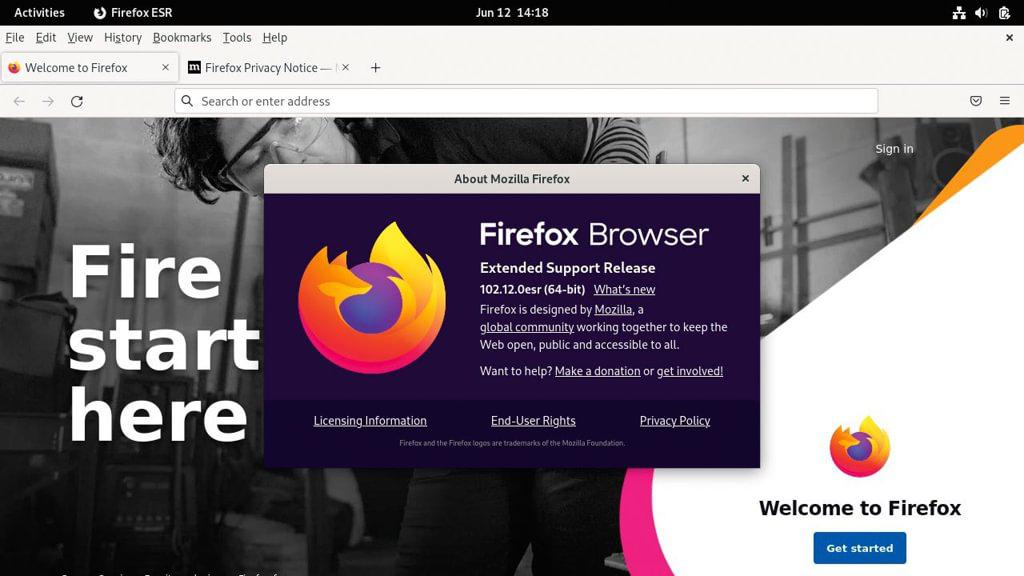
Forget everything you know about Debian. This distro is elegant, supports secure boot, and works with proprietary firmware out of the box. Take a live image for a test spin today. Read our Debian 12 Review.

SPECS
CPU: 1GHz
Mem: 256MB
HDD: 10GB
Builds: i386, x86_64, ARM64, ARMhf, mipsel, mips64el RISCV64, s390x, PPC64el
After one year, nine months, and 28 days of development, the Debian Project is proud to present its new Stable version 12 (code name Bookworm). Anyone familiar with Linux will know Debian is one of the oldest maintained operating systems, dating back to 1993. It’s also the basis for some Linux distros, including Ubuntu.
The delay in the development of Bookworm is typical of Debian, as the OS moved from the Testing to the Stable branch. This involves freezing the existing Testing distro and removing bugs where possible – a process that can take years but makes for a very stable operating system.
This may be old news to experienced Linux users, but there are some exciting changes in Debian 12. Most importantly, in 2022, the Debian Project arrived at a general resolution about non-free firmware.
This is an eternal dilemma for open-source developers, who dislike including potentially buggy or unsafe proprietary code but also don’t want to detract from the user experience. This is no joke, as we discovered the hard way when installing Debian 7 back in the day, only to find the Realtek drivers for our laptop’s Wi-Fi card weren’t supported, forcing us to download them to a USB stick from another device manually.
The new resolution on non-free firmware seeks to address such dilemmas. In brief, it means that Debian now includes a non-free firmware repository. (Any existing non-free packages have been moved here, too.) Crucially, these will not form part of the Debian system, but if the installer determines non-free packages are required, they will be enabled by default with Apt 2.6.
Debian’s Social Contract has also been updated to say that Debian official media may now include firmware that’s not part of the Debian system to enable the use of Debian with hardware that requires non-free firmware.
For those who like to drill into the numbers, we can’t put it any better than the Debian Project itself:
“This release contains over 11,089 new packages for a total count of 64,419, while over 6,296 packages have been removed as ‘obsolete.’ 43,254 packages were updated in this release. The overall disk usage for Bookworm is 365,016,420kB (365GB) and comprises 1,341,564,204 lines of code.”
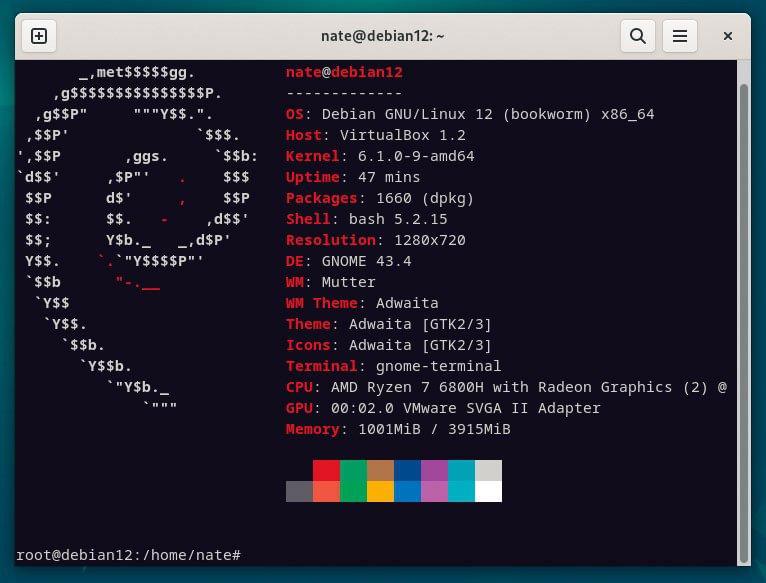
Assuming you’re happy to go ahead, Debian.org hosts some images for various architectures. The default netinst ISO fits nicely on a CD at 738MB, and the install footprint was less than 8GB in our virtual machine.
This distro comes bundled with the Gnome 43 desktop environment. (Sadly, Gnome 44 didn’t make the freeze, being released at the end of March.) If this isn’t to your taste, live 64-bit ISO images are porting Plasma (5.27 LTS), Cinnamon 5.6, Xfce 4.18, LXDE 11, LXQt 1.2.0 and MATE 1.26.
This is the most comprehensive OS we’ve reviewed; it’s available on nine different architectures. If you’re still clinging to 32-bit, however, “32-bit PC (i386)” no longer covers any i586 (Pentium MMX) CPU; the minimum is i686 (PII+ SSE). The developers recommend staying with Debian 11 if you can’t upgrade your hardware.
The Debian Cloud team also publishes Bookworm for several cloud computing services, including Amazon’s EC2, Microsoft Azure, OpenStack, GenericCloud, and NoCloud. The developers assure users that the GenericCloud image should run in any virtualized environment. The cloud team will provide updated images for Bookworm until the end of the LTS period.
If you favor the desktop version of Debian, the default theme, designed again by the amazingly talented Juliette Taka, is Emerald. Taka’s aim was to bring light and ethereal together in a clean design.
It’s easy to see she’s succeeded from the offset, as the theme is present in the GRUB bootloader, installer, login screen, and wallpaper.
While on the subject of GRUB, Debian’s bootloader no longer runs OS-Prober. This was a way for Debian to check for the presence of other operating systems so it could add them to the boot menu. Unfortunately, it was causing errors in some cases, such as when using guest virtual machines, so it has been disabled by default. You can re-enable it again by editing /etc/default/grub.
DEBIAN DEPENDENCY
If you have any contact with the Linux world, you’ll often hear praise about Debian’s stability, but why is this? What makes it so special relative to other distros?
The answer lies in the three branches of Debian, all of which are regularly maintained.
The Unstable branch (which always uses the code Sid) acts as the trunk or development version. Packages can be approved by comparing how they affect the distro’s stability. They often contain the very latest software, although, of course, this may not function as expected.
The testing branch is a preview version of Debian, which will be its next major release. With the advent of Debian 12, the current testing version is Debian 13 (code name Trixie). Software packages tend not to be the most recent versions and usually have had some testing.
Once a Testing branch is considered sufficiently stable, it’s frozen. Any bugs are fixed and obsolete packages are removed during this time.
This process can take years and the Debian Project doesn’t restrict itself to a timeline before announcing a Stable release like Debian 12. These releases are only upgraded if there’s a major issue with security or usability, but this is unlikely given the extensive testing they undergo. Stable versions of Debian are typically supported for around five years after release.
Visit www.debian.org/download to download the latest Stable version of Debian. If you feel brave, visit www. debian.org/releases/testing/ to download the current Testing release.
Beauty’s more than skin deep, of course, and Debian 12 doesn’t disappoint under the hood, either. Apart from removing around 10% of the packages from Debian 11 and upgrading around two-thirds of the others, the OS sports some very nifty new code. One such improvement is in how Debian handles differing filesystems. There’s now read/write support for Apple’s proprietary AFPS format, and there’s even a new tool called ntfs2btrfs that can convert NTFS drives to Btrfs.
Bookworm comes with Linux kernel 6.1. At the time of writing, the latest version is 6.3.7, but using the older LTS version makes perfect sense in an OS designed for stability, currently supported until December 2026.
The pre-installed apps also reflect this commitment to stability over installing bleeding-edge versions of apps. For instance, Debian 12’s default web browser is Firefox 102.12.0esr (Extended Support Release). Productivity is handled by LibreOffice 7.4.5.1 and email by Evolution 3.46.4-2. Again, these aren’t the most recent versions but the Debian Project takes years to ensure they won’t undermine system stability, so upgrade at your own risk.
Just as with the latest version of Ubuntu, PipeWire has now replaced the rather dated PulseAudio, which should provide much better audio and video playback.
Debian remains one of the most popular Linux server distros, so network admins will be delighted to see that Bookworm comes with Apache 2.4.57, Nginx 1.22, BIND DNS Server 9.18, OpenJDK 17 and Dovecot MTA 2.3.19.
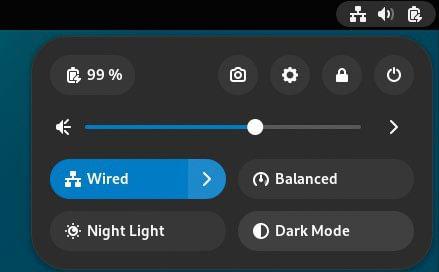
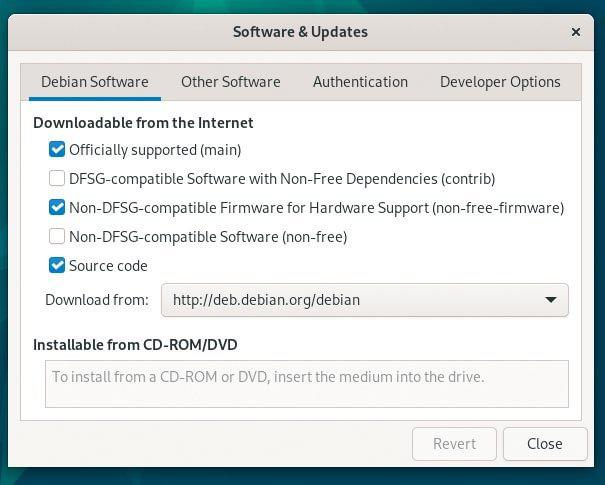
The Debian Med version, designed to be suitable for medical and biochemical research, also comes with a new package: shiny-server, which simplifies scientific web applications using the open-source language R.
Security-conscious users can breathe a sigh of relief that support for Secure Boot on ARM64 has now been reintroduced. This means users of UEFI-capable ARM64 hardware can boot with Secure Boot mode enabled once again. This will hopefully encourage more users to install Debian, as previously, Secure Boot had to be disabled on some devices to set up the OS in the first place.
Debian 12 Bookworm will be supported for five years until June 2028.
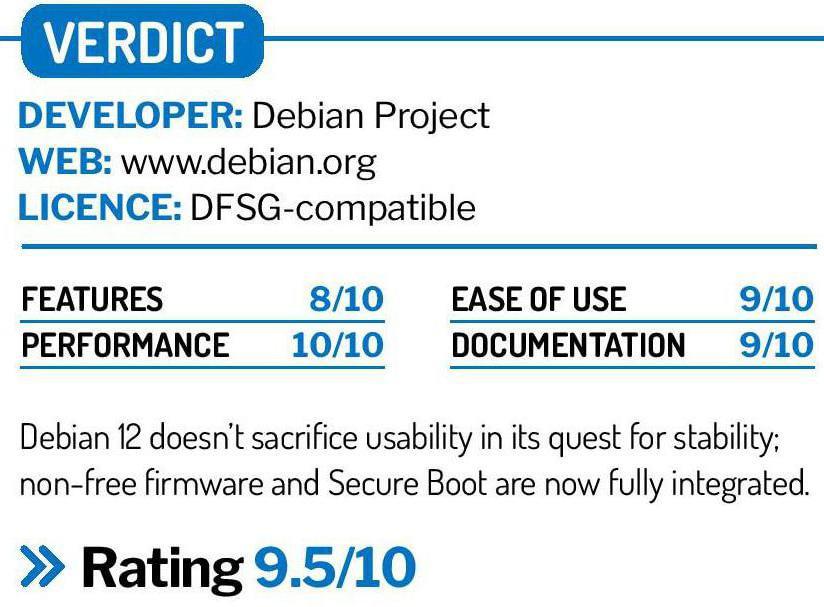




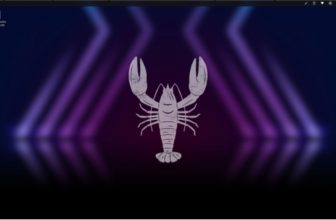

Have not tried Debian in years and found out the install process is still straight out of some old school process where I tried the network install process and wished I had not. Oh, I got through it just fine but baby sitting through the install when most other have long since streamlined the process was eye opening. No doubt this would frustrate many newbies into just installing Ubuntu or Mint. Heck you could get a similar experience with Fedora Gnome and install would go smoother. In any case, Debian isn’t about the swiftest install or the the favorite for a newbie. No Debian is about stability and setting the bar for that. It is why so many distributions base themselves partly off of Debian and for good reasons. If I had to nix Debian as a recommended distro, it would be that it needs to put all the pieces into a convenient package that can be more simply installed especially in todays users who come from a Windows experience. Rather then chasing away a Windows user with overly complicated install process. Just make a install focused not on the computer science major, but rather the fed up Windows user who barely can install a simple app let alone make critical and not understood install choices for Debian.